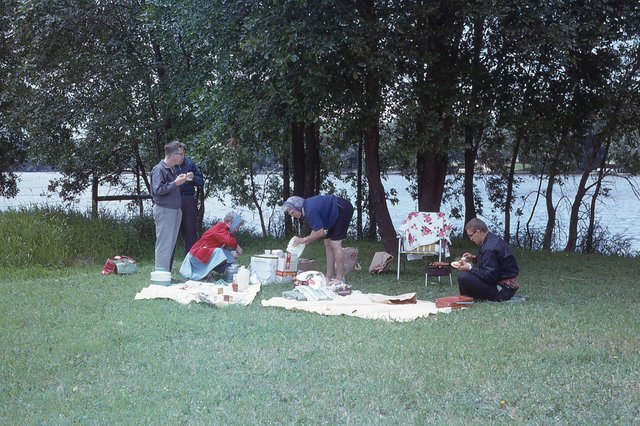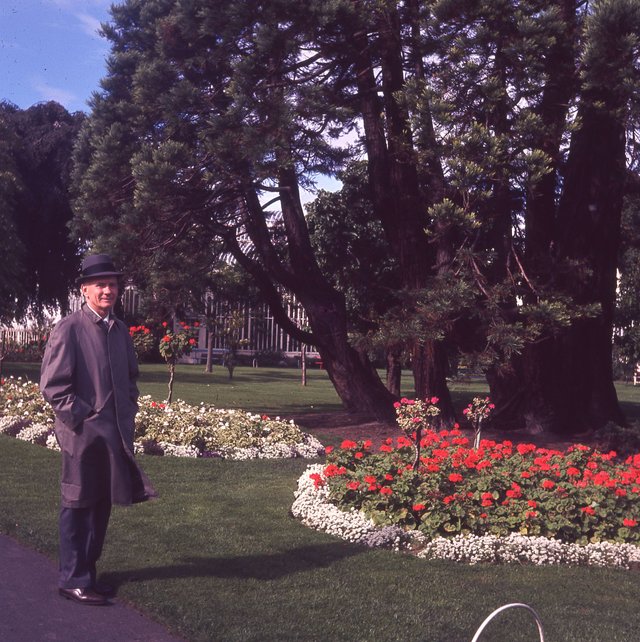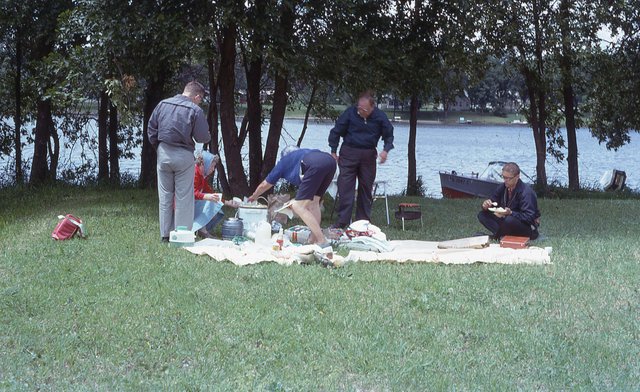7 Non-Tech Jobs That Underrepresent Women (And the Story They Tell)

It’s common to hear today how underrepresented women are in tech. These critiques are often leveled by important Silicon Valley heads like
Melinda Gates and Google CEO
Sundar Pichai, as well as media commentators who lament that “
women are being left behind.”
It’s true that women are underrepresented in the tech world. Data show that women occupy
just 20 percent of tech jobs in the U.S., while women own
just 5 percent of startups.
These statistics and others like them are a source of great distress (and shame) for Silicon Valley. There are two primary reasons for this.
First, diversity, particularly in regards to race and gender, has become a cultural dogma, an idea to be pursued (never questioned) even if it comes
at the expense of personal choice. Second, it is taken as gospel that the gender disparity in STEM fields stems (pun intended) from gender discrimination.
There is immense pressure to correct the gender imbalance, and proponents have adopted a tried and true strategy often employed by religious institutions to make it happen: get them while they’re young.
CNBC, for example,
recently reported that there are organized efforts to press school girls into coding as early as the third grade.
“We have to start as young as we possibly can because we know that essentially it's in middle school where all of a sudden these subjects aren't cool," explained Reshma Saujani, the Founder and CEO of
Girls Who Code.
Local governments are also getting in on the action of promoting women in tech.
Other Fields in Which Women Are Underrepresented
There may be nothing wrong with nudging little girls toward tech, but it’s worth pointing out that tech jobs are not the only positions in which women are underrepresented. In fact, other occupations have gender disparities much greater, government data show. Here are seven of them:
- Loggers (94.9% male)
- Roofers (98.3% male)
- Garbage collectors (91.4% male)
- Steelworkers (98% male)
- Miners (99.9% male)
- Fishing workers (99.9% male)
- Truck drivers (94% male)
These statistics raise several questions. Why are these fields dominated by men? And why are there no highly visible campaigns to “correct” the underrepresentation of women in them? Regarding the former question, it’s certainly possible that gender discrimination is to blame. But could other factors be responsible?
Alison LaValley, a vice president of the
National Roofing Contractors Association, told me industry leaders are aware that roofing has historically been and continues to be a male-dominated business. She said women probably account for about 10 percent of the roofing workforce—not 1.7 percent—if supplying, manufacturing, and support positions are included (versus just roofers).
According to LaValley, the gender gap is largely attributable to perception and communication. Many people view roofing as a “male” occupation, similar to how nursing was once considered a “female” industry. Also, many women simply may be unaware of the many career opportunities available in roofing. Some women, like some men, might shy from working on a roof, she admitted. But she said there are many career paths in roofing that do not involve labor or going on a roof.
LaValley, who has spent 30 years in roofing, did not mention discrimination or gender oppression until I brought it up. She told me she's seen little evidence of it.
In fact, she said the roofing industry, like the tech community, has been working hard to attract women. The NRCA’s board is 20 percent female, she said, and now has a diversity and inclusion committee. In 2016,
National Women in Roofing was launched to help connect and empower women in the industry.
Still, there no questioning the stereotype that roofing is “men’s work.”
“We’re doing everything we can to tell people otherwise,” said LaValley.“Roofing is changing. The changes I’ve seen the last 10 years have been remarkable.”
A Theory Unrelated to Discrimination
Bringing up gender disparities in occupations can be a sensitive subject, especially in
STEM-related occupations.
In 2017, when former Google engineer James Damore hypothesized that factors other than gender discrimination could help explain the gender gap in tech,
he was fired. More recently, a professor of Pisa University
was suspended after presenting a paper in Geneva suggesting that physics, an overwhelmingly male field, “is not sexist against women.”
As previously stated, it’s certainly possible that roofing companies and the like are discriminating against women. However, I’ll posit another theory.
It’s possible many women simply don’t wish to become truckers, garbage collectors, loggers, or roofers. There are several reasons this might be the case. For starters, these are
the deadliest occupations in America (see below).

Second, these jobs are rather grueling, unpleasant even. I know this to be true because I’ve done some of them.
Personally, I can think of few jobs worse than slinging garbage on a hot July day—when juices have been marinating in the Wisconsin heat for days, and the maggots are the size of small worms—but one of them is roofing houses. Now, these are both noble and important jobs. Both, in fact, helped get me through college—in part because they helped pay my tuition and also because they strongly encouraged me to finish my coursework and get my degree so I would not have to do such work in my 50s and 60s. Roofing, in particular, is probably the most physically taxing work I’ve ever done. (Of course, as LaValley mentioned, career paths exist in roofing beyond labor; I just never reached them.)
I bring this up not to imply that women
can’t do such work. They can. But I suspect that many women do not wish to do this work, and not because they’re physically incapable of doing it. In fact, I have no reason to believe that the average woman is any less capable than the average man of driving
the 2,500 miles per week the average trucker does. But I suspect many women have no
wish to do so, at least not for the compensation the market offers.
My point is that men and women might simply have different desires, tastes, and expectations in regards to their professional and personal lives. This would not seem to be an especially controversial idea, yet it is, especially when applied to the STEM fields.
The Damore Memo
Much of the heated rhetoric surrounding Damore’s infamous “diversity manifesto,” it seems to me, stems from people seeing and hearing different things. Critics
often suggest that Damore said or believed women are “incapable” of working in tech and leadership roles because of biological differences. Others
seemed to think Damore was saying women are “less capable” than men.
In reality, these words—“incapable” and “less capable”—
never appear in Damore’s memo. Rather, Damore seems to suggest that these positions are less
desirable to women for various reasons (biology, social constructs, etc.).
But, semantics aside, the primary point of Damore’s memo is this: “We need to stop assuming that gender gaps imply sexism.”
These words, which appeared in the section breaking down personality differences between men and women, are what sent a shockwave through the tech world. Protests erupted. Damore
was called a “fascist” and a “piece of s***.”
The words Damore said and the words his critics heard were quite different. It was almost as if Damore was speaking a different language than his critics. And in a sense, he was.
Our Three “Languages” of Politics
Damore’s memo created an uproar for two reasons. First, it directly challenged Silicon Valley’s political philosophy (progressive). Second, Damore essentially used a foreign language to challenge the paradigm.
In his book
The Three Languages of Politics, Arnold Kling argues that
three languages are used today to discuss politics: progressive, conservative, and libertarian. Each of these languages views the world through a different binary lens: oppressor vs. oppressed (progressive); civilization vs. barbarism (conservative) and freedom vs. coercion (libertarian).
Damore was essentially speaking the last of these languages (freedom vs. coercion). Women are not being oppressed, he argued, they are simply
choosing alternative career pathways based on their own professional desires.
Many progressives, seeing the issue through the lens of oppressor vs. oppressed, saw Damore’s memo as mere “
mansplaining.” This, to them, is an issue of
oppression, not choice.
Who Is Right?
Damore’s memo is in a sense a Rorschach test. People’s responses to it are likely to yield more answers than the test itself. However, new evidence suggests Damore’s central claim—that the gender disparity in the tech world is more about choice than oppression—is correct.
In what
The Atlantic calls “a strange paradox,” researchers at the University of Missouri recently
found that women are less likely to go into math and science careers in countries where women are empowered. This is how Olga Khazan of
The Atlantic summarizes the findings:
...the countries that minted the most female college graduates in fields like science, engineering, or math were also some of the least gender-equal countries. [Researchers] posit that this is because the countries that empower women also empower them, indirectly, to pick whatever career they’d enjoy most and be best at. [emphasis mine]
But is this truly “a strange paradox”? The idea that women increasingly pick careers they enjoy as they gain freedom (financial and political) hardly strikes me as strange. Nor would the average American find it so, I suspect.
This idea is “strange” (maybe even unfathomable) only to someone steeped in the oppressor vs. oppressed political language and mindset.
What If It Is Just about Choice?
If women are simply choosing to avoid tech careers because they don’t find them all that appealing, would all be well? Well, probably not.
Women choosing to avoid careers as roofers, loggers, and truck drivers is apparently fine. We don’t see campaigns to get women into these positions (at least I haven’t). But if women, acting as individuals, are shunning promising careers in STEM fields, that is a problem. Because tech is the future, and
the future is female.
A dearth of women in STEM careers runs counter to the narrative of female progress, which many interpret as achieving perfect economic parity with men. So if women are not interested in tech jobs, they’re going to have to learn to be interested in them for the greater good. Hence the public campaigns and organizations like Girls Who Code.
If you think women are individuals free to make their own decisions about their careers, you simply have not been paying attention.
“Collectivism means the subjugation of the individual to a group—whether to a race, class or state does not matter,” Ayn Rand once observed. “Collectivism holds that man must be chained to collective action and collective thought for the sake of what is called ‘the common good.’”
Source: 7 Non-Tech Jobs That Underrepresent Women (And the Story They Tell) - Foundation for Economic Education
















































